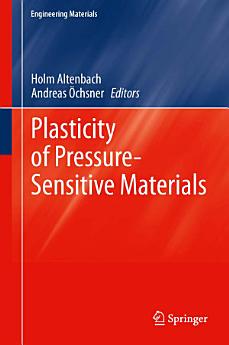Plasticity of Pressure-Sensitive Materials
Holm Altenbach · Andreas Öchsner
يوليو 2014 · Springer Science & Business Media
كتاب إلكتروني
376
صفحة
reportلم يتم التحقّق من التقييمات والمراجعات. مزيد من المعلومات
معلومات عن هذا الكتاب الإلكتروني
Classical plasticity theory of metals is independent of the hydrostatic pressure. However if the metal contains voids or pores or if the structure is composed of cells, this classical assumption is no more valid and the influence of the hydrostatic pressure must be incorporated in the constitutive description. Looking at the microlevel, metal plasticity is connected with the uniform planes of atoms organized with long-range order. Planes may slip past each other along their close-packed directions. The result is a permanent change of shape within the crystal and plastic deformation. The presence of dislocations increases the likelihood of planes slipping.
Nowadays, the theory of pressure sensitive plasticity is successfully applied to many other important classes of materials (polymers, concrete, bones etc.) even if the phenomena on the micro-level are different to classical plasticity of metals. The theoretical background of this phenomenological approach based on observations on the macro-level is described in detail in this monograph and applied to a wide range of different important materials in the last part of this book.
تقييم هذا الكتاب الإلكتروني
أخبرنا ما هو رأيك.
معلومات القراءة
الهواتف الذكية والأجهزة اللوحية
ينبغي تثبيت تطبيق كتب Google Play لنظام التشغيل Android وiPad/iPhone. يعمل هذا التطبيق على إجراء مزامنة تلقائية مع حسابك ويتيح لك القراءة أثناء الاتصال بالإنترنت أو بلا اتصال بالإنترنت أينما كنت.
أجهزة الكمبيوتر المحمول وأجهزة الكمبيوتر
يمكنك الاستماع إلى الكتب المسموعة التي تم شراؤها على Google Play باستخدام متصفح الويب على جهاز الكمبيوتر.
أجهزة القراءة الإلكترونية والأجهزة الأخرى
للقراءة على أجهزة الحبر الإلكتروني، مثل أجهزة القارئ الإلكتروني Kobo، عليك تنزيل ملف ونقله إلى جهازك. يُرجى اتّباع التعليمات المفصّلة في مركز المساعدة لتتمكّن من نقل الملفات إلى أجهزة القارئ الإلكتروني المتوافقة.






